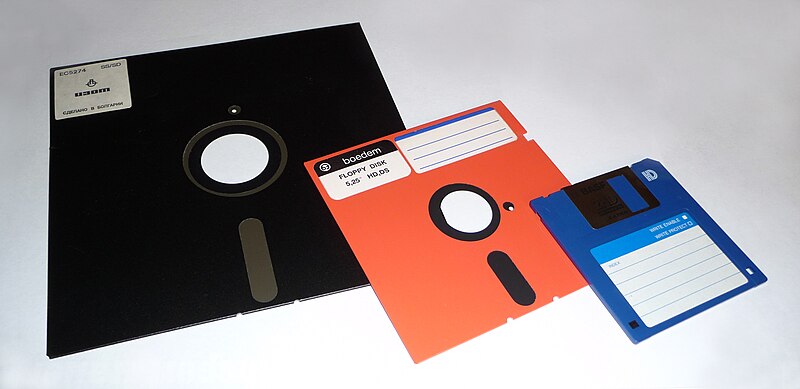Learning Resources
Floppy Drives
A floppy disk, or diskette, is a disk storage medium composed of a disk of thin and flexible magnetic storage medium, sealed in a rectangular plastic carrier lined with fabric that removes dust particles. They are read and written by a floppy disk drive (FDD).
Floppy disks, initially as 8-inch (200 mm) media and later in 5.25-inch (133 mm) and 3.5-inch (89 mm) sizes, were a ubiquitous form of data storage and exchange from the mid-1970s well into the first decade of the 21st century.[1]
By 2010, computer motherboards were rarely manufactured with floppy drive support; 3 1⁄2" floppies could be used as an external USB drive, but 5 1⁄4", 8", and non-standard drives could only be handled by old equipment.
While floppy disk drives still have some limited uses, especially with legacy industrial computer equipment, they have been superseded by data storage methods with much greater capacity, such as USB flash drives, portable external hard disk drives, optical discs, memory cards, and computer networks.
Different sizes of floppy disks are fundamentally incompatible, and disks can fit only one size of drive. Drives with 3 1⁄2-inch and 5¼-inch slots were available during the transition period between the sizes, but they contained two separate drive mechanisms. In addition, there are many subtle, usually software-driven incompatibilities between the two. 5 1⁄4-inch disks formatted for use with Apple II computers would be unreadable and treated as unformatted on a Commodore. As computer platforms began to form, attempts were made at interchangeability. For example, the "Superdrive" included from the Macintosh SE to the Power Macintosh G3 could read, write and format IBM PC-format 3½-inch disks, but few IBM-compatible computers had drives that did the reverse. 8-inch, 5 1⁄4-inch and 3 1⁄2-inch drives were manufactured in a variety of sizes, most to fit standardized drive bays. Alongside the common disk sizes were non-classical sizes for specialized systems.
An image is shown -


